Email reply rate is the percentage of emails you send that get a reply.
Getting replies to your cold emails should always be your goal, which means that you should treat reply rate, especially positive reply rate, as a crucial metric for the success of your campaigns.
How email reply rate is measured
Email reply rate is measured by dividing the number of replies you get by the total number of emails you send (subtracting bounced emails) and multiplying that number by 100%.
Email reply rate = replies/(all emails sent-emails bounced) * 100%
Most cold email tools automatically calculate the reply rate separately for each campaign you send.
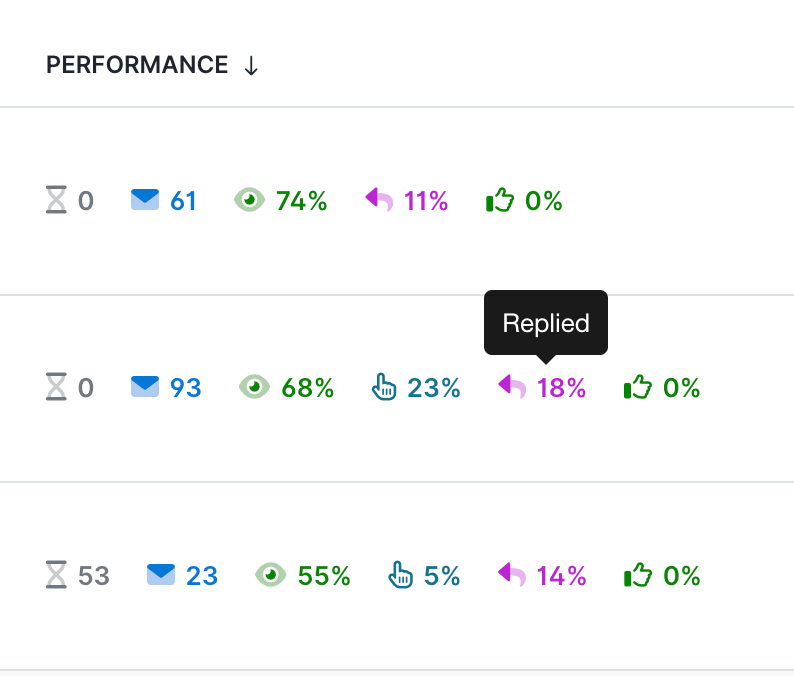
Cold email reply reply benchmark
There’s no universally accepted benchmark for cold email reply rate. That’s because cold emails can be used for many purposes in different contexts and industries. If you’re a recruiter sending cold emails to potential job candidates in an industry with high job mobility, you should expect a much higher rate than someone trying to sell B2B software in a saturated market.
Many online sources recommend a reply rate to aim for based on analyses of large quantities of cold emails. But this advice varies greatly:
- Clearbit claims that the average email reply rate is 1% (without providing much information about how it was calculated),
- Backlinko, in partnership with Pitchbox, calculated the average reply rate to be 8.5%.
- Some other sources say you should aim for a reply rate of 15% without citing any research.
These differences prove it’s difficult to give a universal benchmark for the cold email reply rate.
Furthermore, you shouldn’t confuse an average for a benchmark because it lumps together the reply rates of skilled professionals and beginners.
As you get more experienced with cold emails and you get a better feeling for your industry, you’ll develop your own understanding of a good reply rate.
Analyze the replies you get
Not all replies are the same. There are three main types of replies your cold emails will get:
- Positive replies.
- “Not interested” or negative replies.
- “Unsubscribe” replies.
Cold email tools don’t typically differentiate between these replies, and even if they do, it’s very difficult to accurately assess a reply as positive or negative.
That’s why you should manually go through your replies and analyze them.
In Hunter Campaigns, you can manually mark your emails as “Successful” when they get a positive reply.

You can also unsubscribe the recipients who don’t click the unsubscribe link but respond with an equivalent message.

Positive cold email reply rate
After you review your replies and find the truly positive ones – meaning the recipient is open to moving forward – you can calculate the positive reply rate.
This is a true success metric for cold emails, and you should treat it as the north star metric for your email outreach process.
There’s just one caveat: you won’t do anyone a favor if you maximize your positive reply rate by misleading your recipients. Here’s one example:
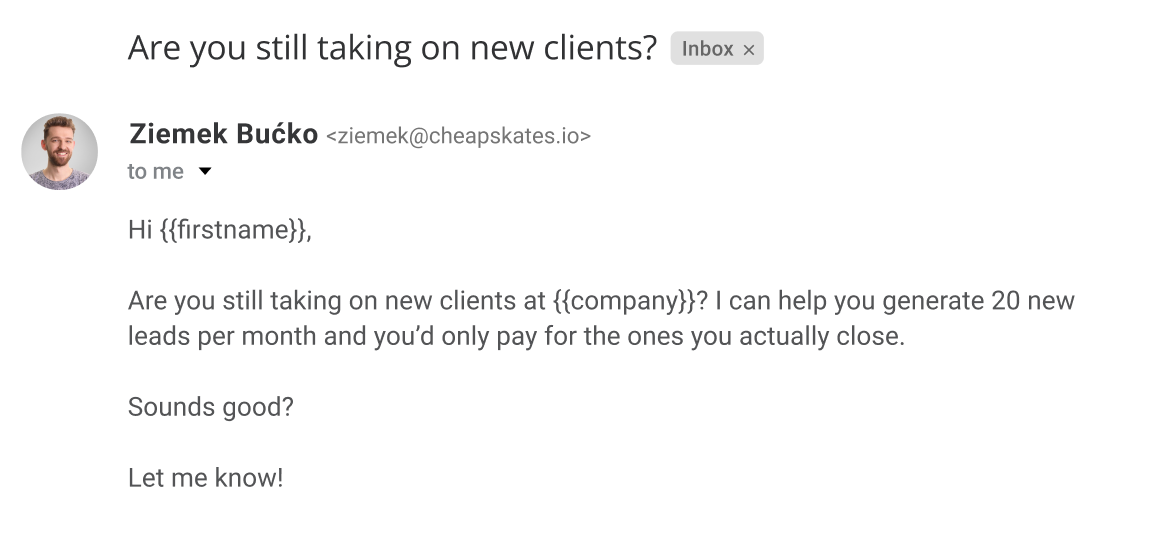
When sent to a group of agency owners, this deceitful cold email might generate an exceptionally high positive reply rate, but it is unlikely to generate significant business results.
What affects cold email reply rate
To understand how you can improve your reply rate, let’s list all the factors that influence it:
Targeting
Even if you do everything else right, you won’t get many positive replies if you send your emails to the wrong people. You should use a narrow ICP to send relevant, personalized campaigns easily.
Email deliverability
Before the recipient can open your email and respond, it must be successfully delivered to their inbox first. So, a low reply rate may indicate deliverability issues on your end.
When your email gets delivered
Timing is extremely important for cold email campaigns:
- On a micro level, the weekday and time of day when your email lands in the recipient’s inbox can determine how likely they are to respond due to day-to-day constraints.
- On a macro level, your email should reach your recipient when they need it.
Your follow-ups
Following up is a great way to encourage your recipient to reply. This works especially well if they didn’t respond in the first place due to poor timing.
Sender address and subject line
What your recipient sees in their inbox immediately impacts whether or not they open the cold email, but also whether or not they reply. That’s because your message should be aligned with the subject line, or your recipient may become confused or thrown off.
Email preheader
Next to the subject line, most email clients display a preheader. When you send an email, you can either provide a specific preheader that the recipient’s email client will use or let it automatically generate it based on how your message starts.

With cold emails, I recommend not using a specific preheader to make your email look more casual and natural. But if the opening paragraph of your email doesn’t play well with your sender address and subject line, it may put the recipient off.
What the recipient knows about you
You will likely give it more attention if you receive an email signed with a familiar name. This is why, in many scenarios, cold email campaigns can be influenced by the reputation you build outside of the inbox – on social media and in the real world.
Your email copy
Everything from your phrasing and formatting to the length of your cold email tremendously influences your reply rate. The email copy is where you need to influence your recipient’s behavior; if you fail, you won’t get a reply.
Email personalization
Personalized emails are likely to get more positive replies because personalization can reinforce the feeling of relevance for the recipient.
Your CTA
A good CTA helps the recipient understand exactly what they should do next. And since all cold email campaigns aim to get a reply, a good CTA suggests how the recipient should respond, making it easier for them to take that action.
How to troubleshoot a low reply rate
A low reply rate should first motivate you to investigate your deliverability and whether or not your emails get opened. That’s because you should ensure your bounce and open rates are within expectations before changing your email and offer.
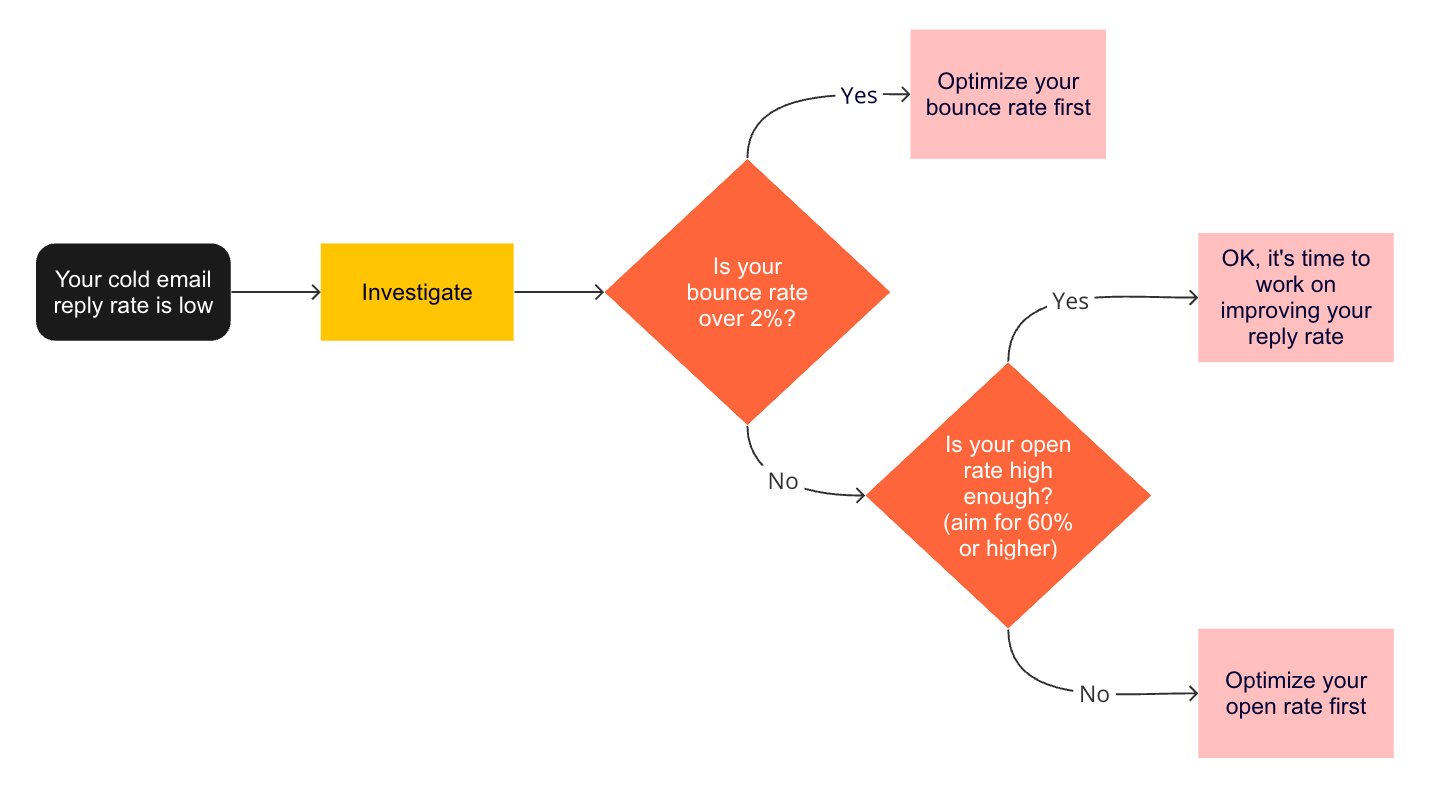
After you’ve ensured that your emails are delivered and opened, but your reply rate is still low, it’s time to apply the best practices to improve your reply rate.
Let’s dive into all the potential reasons why your reply rate is low and how to troubleshoot them:
You’re sending emails to non-qualified prospects
No matter how great your copy is, emailing someone who isn’t likely interested in your offer won't make a difference. On the other hand, your message can be terrible, but still work if you send it to a recipient who desperately needs your services right now.
How to identify this issue: There will be many unsubscribe/uninterested replies among the few replies you get.
How to fix it:
- Use different data sources for your prospecting: Sales Navigator should only be where you start.
- Use novel prospecting tactics: leverage job postings to find out about company needs or to target recent hires and hiring managers, funding data to know which companies might be ready to spend right now, or technographic data from providers like Hunter TechLookup, BuiltWith, or Wappalyzer to target companies based on their tech stack.
- Narrow down your ICP by using additional characteristics shared by the recipients who did reply.
Your personalization is lackluster
Cold email personalization can help build a connection with your recipient when done correctly.
If an email looks like it’s sent in bulk to anyone and everyone, then it’s less likely to generate interest. On the other hand, great personalization can prove to the recipient that you know enough about them to understand how they can benefit from your services.
However, poor personalization can turn your recipient off.
- If you attempt to connect with the recipient by leveraging some of their personal information, you risk coming off as intrusive.
- If your personalization doesn’t reinforce feelings of relevance, you’ll confuse your recipient, and they will likely ignore your message.
Personalization is especially challenging in saturated industries because these recipients get many cold emails, and it’s more difficult to stand out.
How to identify this issue: You’re not using any personalization or personalizing your messages with easy-to-obtain data points, like the recipient’s name and website address.
How to fix it:
- Focus your personalization on showing your recipient that you've researched them so you know they can benefit from what you offer.
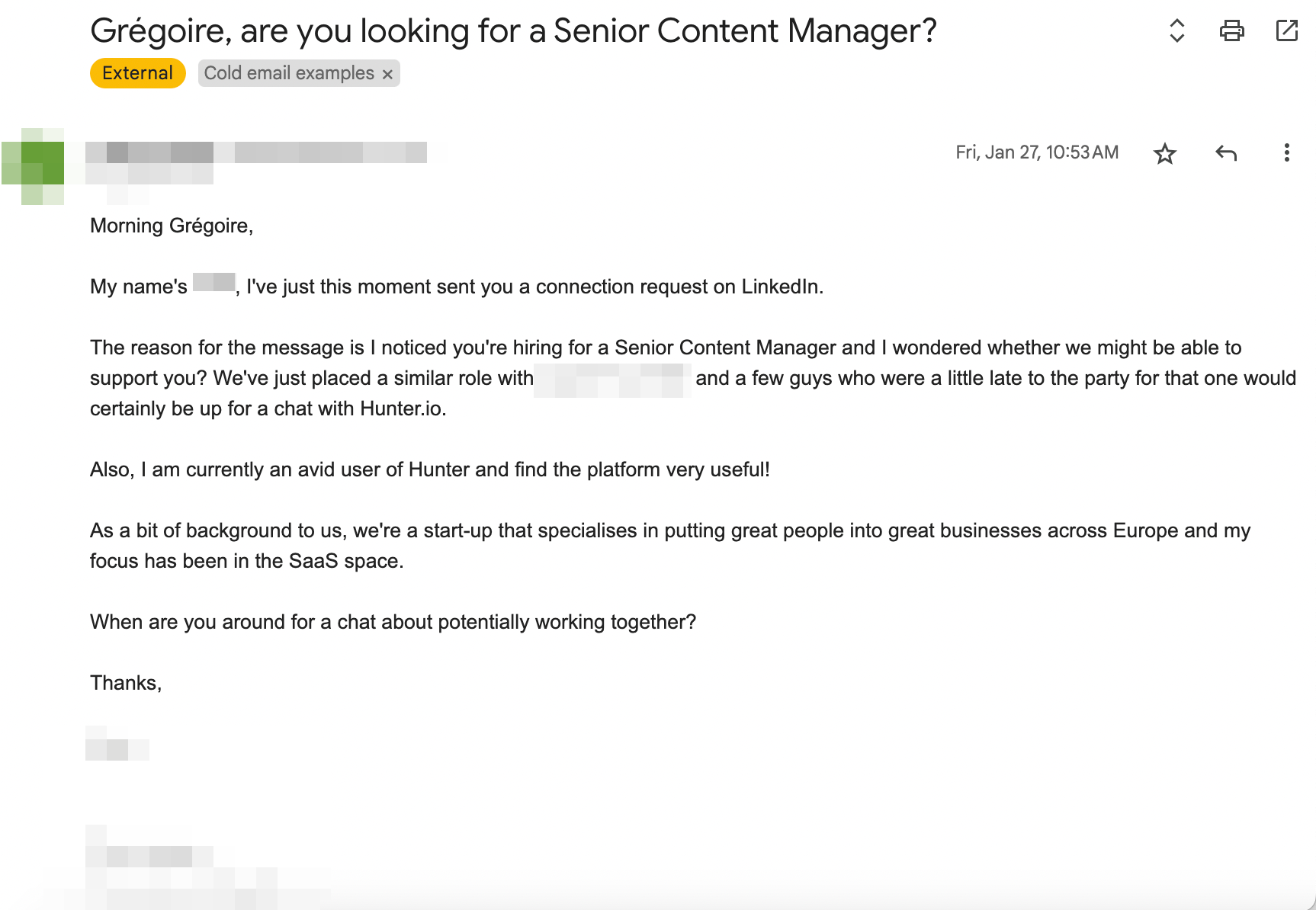
- As a rule of thumb, use your recipient’s first name, company name, or website address as the minimum.
- Customize your emails based on your recipients' professional roles or achievements – refrain from using details from their personal lives.
- Especially in saturated industries, look for unique data sources that are difficult to obtain – personalization that’s hard to replicate will make your cold email stand out.
You’re not using follow-up emails
Even if your offer is relevant and convincing, your recipient may not always immediately reply. And as time passes, your email will get buried in their inbox.
This is normal and frequently happens even outside the cold email context.
That’s why, just like you would follow up with a work colleague who forgets to send you that file you’ve been waiting for, you should always send a follow-up message to recipients who don’t reply.
By properly following up after no reply on your first email, you’re bound to increase your reply rate.
How to fix it:
- Have a plan for follow-ups when designing your outreach campaign.
- Ensure you follow up in the same thread as your initial cold email.
Your sending time isn’t optimal
Your recipient is unlikely to respond when your email hits their inbox as they handle multiple deadlines and emails from colleagues. On the other hand, you’re more likely to get a reply if you reach them as things at work are quieter.
Optimizing when you send your emails is difficult because you must know your recipients well. You should take into account things like:
- Their country of residence,
- Bank holidays,
- Cultural differences,
- Their industry,
- A typical work week for someone with their job title.
However, with a high enough sending volume, you can analyze your reply rate and other engagement metrics per weekday and adjust your sending time accordingly.
How to identify this issue: You’ll get more replies on specific days of the week. If your sending volume is high (think hundreds of emails per day in one campaign), you may observe differences per time of day. You’ll also get many out-of-office replies if the issue is related to holidays as opposed to other characteristics of your recipients.
How to solve it:
- Learn more about your recipients as a group to predict when they are more likely to respond to your emails. If you can, ask your best customers about their typical schedule.
- Check the calendar for bank holidays in the countries you’re targeting.
- Based on your findings, optimize your sending time for a higher reply rate.
Your email is unnecessarily long
If your email is too long, many people won’t bother to read it, let alone reply.
When sending someone a cold email, you’re already counting on their willingness to open it. You’re making it more difficult for your recipient by making your message longer than needed.
Remember: your goal should always be to get a positive reply, not close the deal immediately. And to get a positive reply, most cold emails don’t need to be longer than a couple of sentences.
Here’s why cold emails are typically long: You include too much information. Your recipient can find out more later in the value exchange process or visit your website (which is why you should always redirect your dedicated cold email domain to your main domain!)
It’s important to note that shortening your cold email should not be your priority. It’s just that because you are only starting to build a relationship with the recipient, you need a good reason to make the message long.
How to identify this issue: Your emails will get a high open rate but a relatively low reply rate. You can also try checking your word count – if it’s above 100 words, it’s likely that there’s some content you can remove. Our data shows emails shorter than 100 words get a slightly better reply rate on average than longer messages.
How to solve it:
- Build an outreach process with multiple touchpoints, and don’t try to squeeze the whole process into your cold email.
- Ask ChatGPT to shorten your email. Paste your message and use the following prompt: “<your message> Prepare several variants of this email, shortening each consecutive variant by a small factor. Prepare as many variants as possible until it's no longer possible to retain the key message of the email. Ensure each variant remains coherent, retains the appropriate communication style in an email, and avoids extreme brevity.”
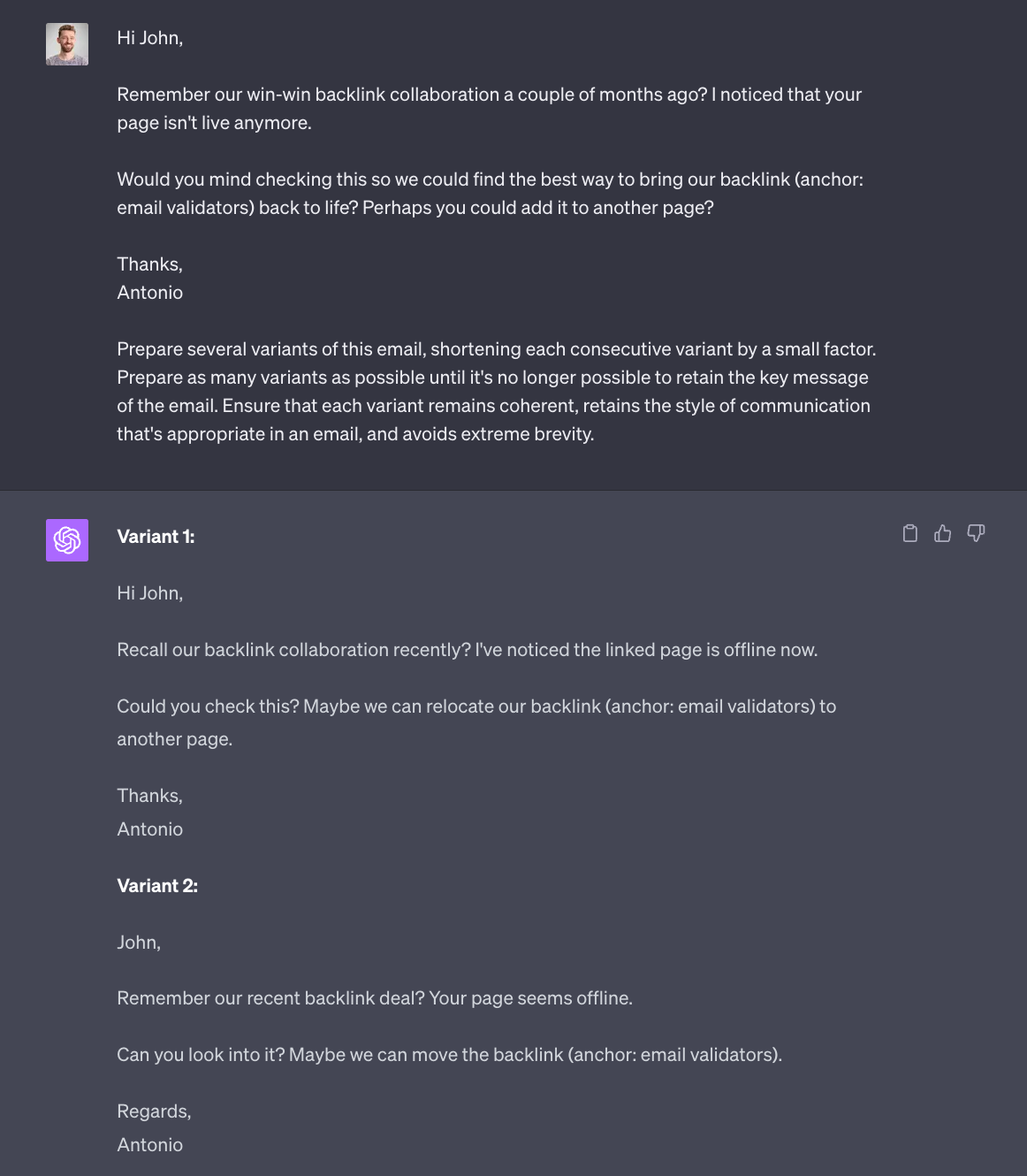
- Alternatively, paste your message into ChatGPT and use the following prompt: “Which parts of this email are unnecessary to get the main point across?” The result will highlight the parts of your message that you might want to reconsider.

Your call to action doesn’t work
A call to action is a proposition of the next step for your recipient. Simple as that.
But for the recipient to want to take that action, you must:
- Clearly explain what they should do,
- State the benefit of taking action so they understand that it’s worth the effort,
- Adapt the effort required on their end to the benefit you’re offering.
Crafting a great CTA requires you to take the right strategic approach (asking the recipient to book a call vs asking them to reply with a quick yes to receive an email with more information), and to masterfully formulate it from a copywriting standpoint.
How to identify this issue: Interview a prospect or a colleague and ask how they would react to your CTA.
How to fix it:
- Always have a clear goal for your email.
- Define the easiest step the recipient must take to move things forward. Some good examples include asking the recipient which of the several pain points you list applies to them, asking to reply with a number, or simply saying “Yes” to sending them over a report, analysis, or some other type of bonus value.
- Only use one CTA per email.
- Use text formatting to make the CTA stand out.
- Don’t follow the CTA with too much text – don’t distract the recipient with more information.
Your subject line is misleading
If you’re using an enticing subject line, but the content of your email doesn’t naturally follow, you’re doing it wrong.
Every time a recipient opens your email, they give you a chance. If you disappoint them, you won’t get a reply. Instead, you’ll get an inflated open rate and a higher risk of getting reported as spam.
That’s why you should refrain from using misleading subject lines. Be original, but don’t be manipulative.
How to identify this issue: Your open rate will be high but your reply rate will remain low, or you’ll get many “unsubscribe” replies. Your subject line could be used for a different email just as well.
How to fix it:
- Define the strongest point of your email. It could be the disproportionate value you offer or being able to name a specific and unique problem that the recipient is struggling with.
- Avoid being overly vague or misleading just to make the recipient open your email.
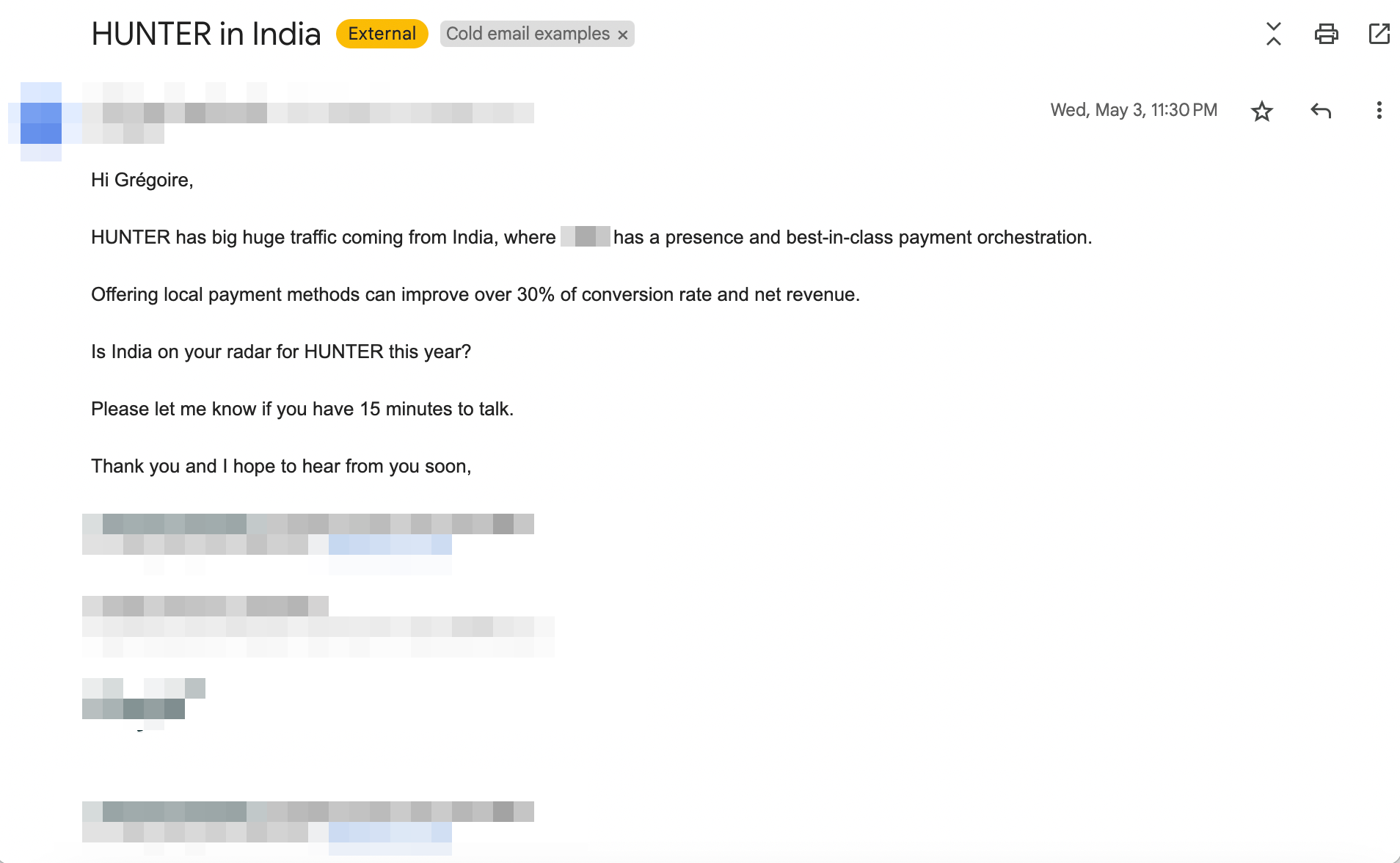
You’re not professional in your copy
When at work, people are expected to act professionally for a reason. It makes it possible to get things done despite personal differences.
You should apply the same logic to your cold email campaigns. It doesn’t mean you can’t try building a personal connection or lightening things up, but only in a manner you would also use with a new colleague you meet in person.
That might mean avoiding:
- Inappropriate jokes,
- Politics,
- Religion,
- Controversial social issues,
- Overt criticisms of other companies or professionals.
How to identify this issue: The content of your email contains references to unrelated, emotionally loaded topics. Your unsubscribe rate (and spam complaint rate) will be high.
How to fix it: Cut the fluff from your message. Instead, clearly state why you believe the recipient can benefit from your offer and suggest their next course of action.
You didn’t proofread your email
With the rise of generative AI, proofreading has become incredibly simple. There's no reason to send emails marred by spelling or grammar errors, as they can make your content appear unpolished.
Using AI, you can quickly remove any minor mistakes in your copy. While you shouldn’t obsess over it, you should remember that sending unpolished copy may be perceived as disrespectful.
How to fix it: Paste your copy into ChatGPT and add, “Proofread this and rewrite any errors or confusing fragments that you found.”
The structure of your message is off-putting
Too much formatting will make your cold email look more salesy and may decrease your reply rate. But when used modestly, formatting your message can make it look clean and improve readability.
It’s a particularly good practice to use both ordered and unordered lists. They can help you break down complex ideas, summarize key points of your message, or better communicate sequential information, like a sequence of steps.
If you see a lump of text in your message that might turn the recipient away, see if you can turn it into a list. It should make your email easier to read and understand, positively affecting your reply rate.
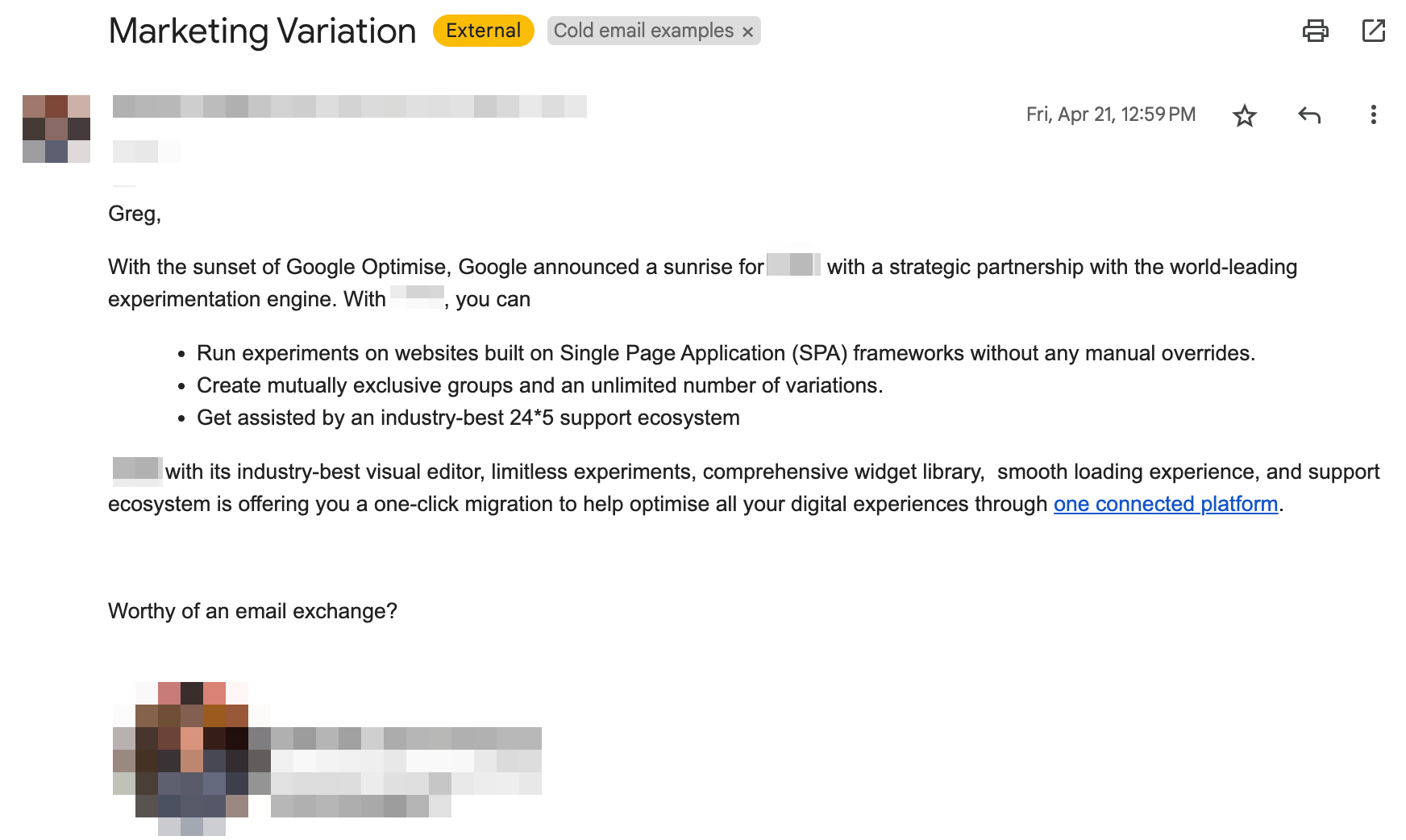
Bonus: You lack social media presence
This piece of advice may not apply in all cold email scenarios. But for some campaigns, the sender name may be a key factor for the reply rate.
First, if you’re a recognized expert among your recipients, they will react more positively to seeing your email in their inbox.
Secondly, the recipient may look you up before responding, and what they see on social media will shape their first impression of you.
That’s why having a strong social presence can boost the reply rate of your campaigns. If you want to use cold emails to grow your business in the long run, consider the time spent on building your brand to be an investment in growing the success rate of your campaigns.

